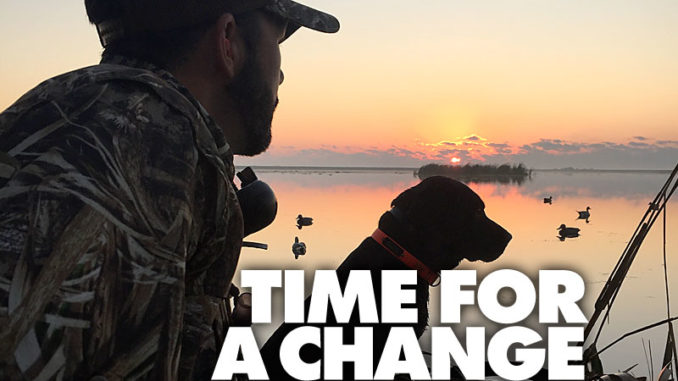
With fewer ducks visiting Louisiana’s marshes, hunters need to come up with some new ideas and plans to keep their success on par with past seasons.
Louisiana duck hunters are blessed with a long season and liberal bag limits. Unfortunately, the ducks haven’t gotten the message, as waterfowl numbers in our state just aren’t adding up to very much. By all accounts, the low numbers have made this season’s hunting success is hit or miss prospect at best.
Ducks are here one day and gone the next. One pond is hot, while the surrounding areas are empty. A new spread produces decoying birds the first hunt, but it can’t even buy a look the next time out. With more volatility than the stock market, what can duck hunters do to capitalize on the limited chances they do get? Unlike the duck numbers, there is no shortage of opinions from duck hunters.
Moving around
It’s clear, not just from The Louisiana Department of Wildlife and Fisheries’ surveys, but from hunting reports across the state, that there are no consistent concentrations of ducks. The calendar, weather and hunting pressure all conspire to move birds from pond to pond and state to state. If the birds are moving around, hunters might want to consider following suit.
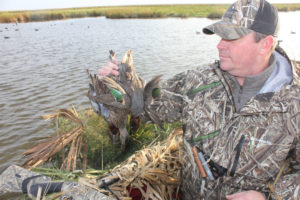
Love them or hate them, hunters can acknowledge the effectiveness of a mud boat to provide access they would not otherwise have.
“It’s probably one of the most effective pieces of hunting equipment developed in the last 15 to 20 years,” said James Desormeaux, who hunts the West Zone near White Lake and readily acknowledges how easy it is to pressure birds too much. “We shouldn’t be hauling (butt) through every flock of ducks (we) see.”
Even though mud boats can be misused, hunters should consider the versatility afforded by a surface-drive boat and a pop-up blind. Having a portable blind means the ability to pick-up and hunt completely new areas, change leases, change WMAs, change zones.
“And making breakfast in the blind is a bonus, too”, James shared.
Having a mobile set-up forces hunters to get out of the permanent blind in order to use their rigs, but that mobile strategy doesn’t have to solely apply to boat-blind hunters. Danny Buckner, a Venice regular, takes advantage of the public-land offerings at the mouth of the Mississippi River. In a lot of locations downriver, that means getting out of the mud boat.
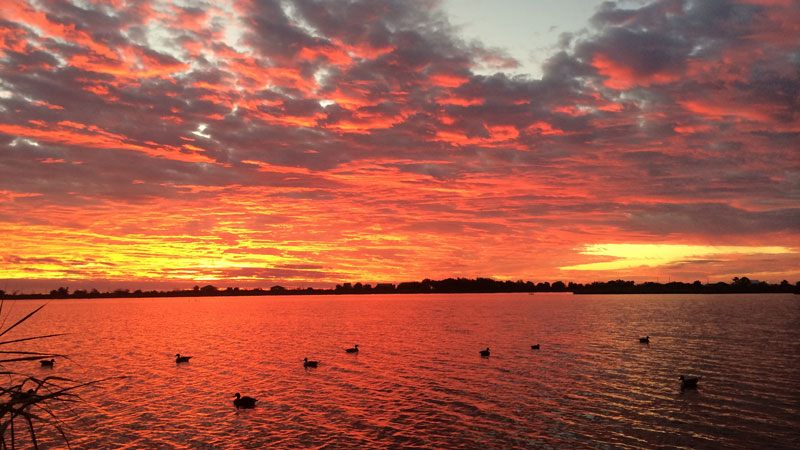
“I can get hidden way more in a pirogue, than I can in a mud boat,” said Buckner, who uses a pirogue to hunt small openings in the marsh and backwater holes off bigger bays.
Keeping himself concealed and making a small footprint means the limited numbers of ducks actually give him a better opportunity at getting quality shots.
“I feel like I have more chances at big ducks hunting in the smaller and out-of-the-way holes. It’s not always limits, but it is good ducks,” Buckner said.
Decoy spread needs
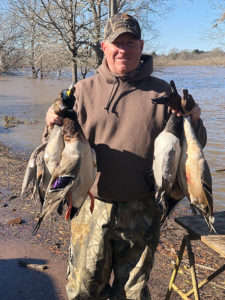
So now you’re dancing around the marsh, looking for new spots, like your Lab hunting up a downed bird. What’s the best decoy set-up? What kinds of decoys? Mojos or no motion? How many decoys to use?
“All of them,” Drew Mire joked. “I bought them damn decoys to use.”
Mire and his son, Jacob, have several leases around the Delacroix and Reggio areas. Duck hunters have heard the conventional wisdom that says lots of decoys early in the season and fewer decoys late. But the Mire crew believes the size of the spread is dictated by where they hunt; not when they hunt.
Delacroix has diverse estuaries that don’t lend to the conventionally thought of “pond” perimeter. Instead, the marsh is eroding and continually opening new pockets and bodies of water to hunt. While an area may appear to be open water, actually it’s a large flat of submerged vegetation.
In these types of open-water scenarios, Mire’s spread might include 10- to 12-dozen decoys of every different size, species and brand; it’s every decoy under the sun, except for greenheads.
“I don’t use greenhead decoys. It’s so rare to kill ’em. Why hunt with decoys of ducks you don’t shoot?” Mire asked.
The Mires employ a large, circular spread to represent rafted-up birds. Jacob Mire always throws in several Mojos on each side of the blind for movement.
“Your decoys don’t matter if the birds can see them,” Drew said.
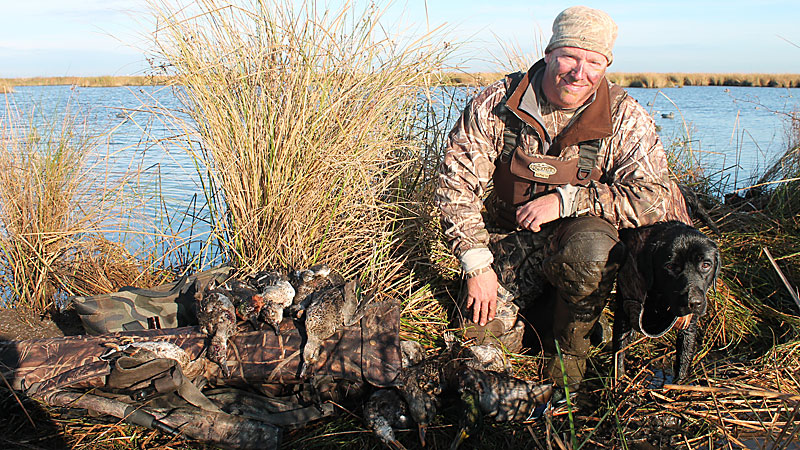
While numbers of decoys can entice big, leery ducks, realism in a spread can no doubly be just as effective. Scott Carney, another Plaquemine Parish hunter, goes the extra mile in working to create a realistic set-up.
“You have to try and hunt where the birds want to be,” he said. “If I’ve got a spot ducks are going to, then I want the decoys to match the ducks in the area.”
Carney limits the numbers of decoys he uses, letting the circumstances of what he sees dictate the numbers of imposters he puts out. He also separates decoys by specific species: a group of teal here, a couple of mottled ducks there. Carney likes to mix in a tight grouping of poule d’eau with a couple of big greys in that decoy group. Particularly in the late season, those greys love to land on a group of poule d’eau.
On the other hand, he is not a fan of spinning-wing decoys.
“I took those things out of my spread years ago,” Scott said. “Those things will attract juvenile birds, but after about the first split, the birds are too smart for those things.”
When we goin’?
Duck hunters from Minnesota to Louisiana are pretty consistent with their duck-hunting schedule. Early morning wake-ups and set-ups to catch birds at first light, then, keeping the faith until that 8 a.m. flight takes off again. And if you’re a true die-hard, then you just might wait until 9:30 a.m. to let the weekend warriors bump up ducks when they pick up decoys and head to the boat ramp.
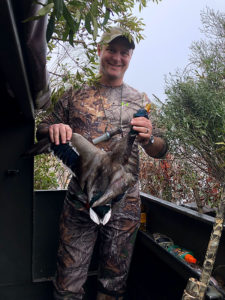
But duck hunters might want to reconsider that consistency. As any deer hunter will attest, patterning deer movement is probably the No. 1 ticket to regularly seeing deer from the stand. Ducks aren’t much different and are growing accustomed to duck hunters’ schedules. It’s common to see birds loafing in deep water, moving immediately after sun-up.
Jason Pittman, who hunts in and around Catahoula Lake, has no apprehension in adjusting his routine to bag a few quality birds that have changed their morning flight plans. Public land can be a zoo first thing in the morning, and not because of the wildlife. Proximity of hunters, late hunters, sky-blasters and call-masters can really make mess up a promising hunt. Not dealing with the crowds has it benefits.
“There’s been times, like that 9-to-noon window, that I’ve done really well, not having to compete with other hunters and callers,” Pittman said. “But sometimes, we’ll hunt right up ‘til the end of hunting time: noon on federal refuges and 2 p.m. on state WMAs.”
Weather is also a driving factor in duck movement. Hunters ought to stay up late to catch that last TV weather forecast. Changes in weather are always a factor that Pittman will change his schedule to take advantage of.
“We call those ‘flight days,’ man, when that front pushes through and new birds are riding that edge,” he said. “I don’t know what it is, but when those birds first get here, it can be good.”
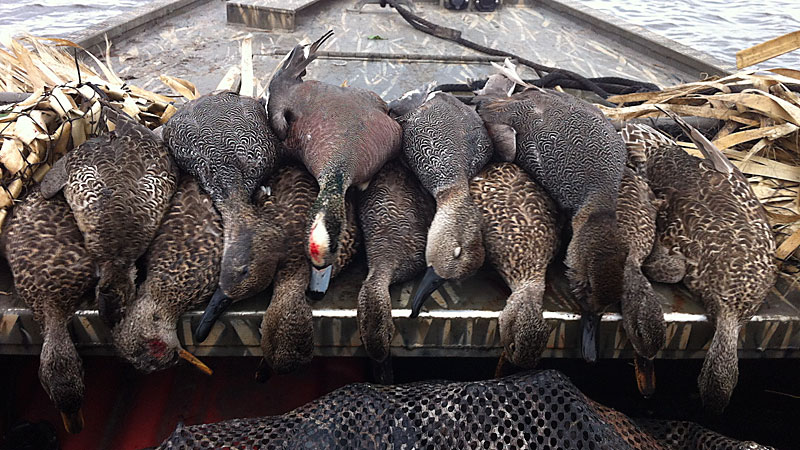
A new breed
Hunters will can continue to debate the whys behind the lack of waterfowl in Louisiana. In the meantime, one thing’s for sure: with a lower numbers of ducks, hunters can’t stick with the same routines that produced full straps in years past. Like everything in life, hunters will have to embrace changing patterns in order to put a few birds in the gumbo.
As any duck hunter will tell you, there is no secret spot, technique or device that compensates for having fewer ducks to hunt. The new age of duck hunting is going to take constant travel all over the state, hand-selected decoy deployment of all shapes and sizes, and finally, changing your circadian rhythm to align with this new breed of big ducks.


